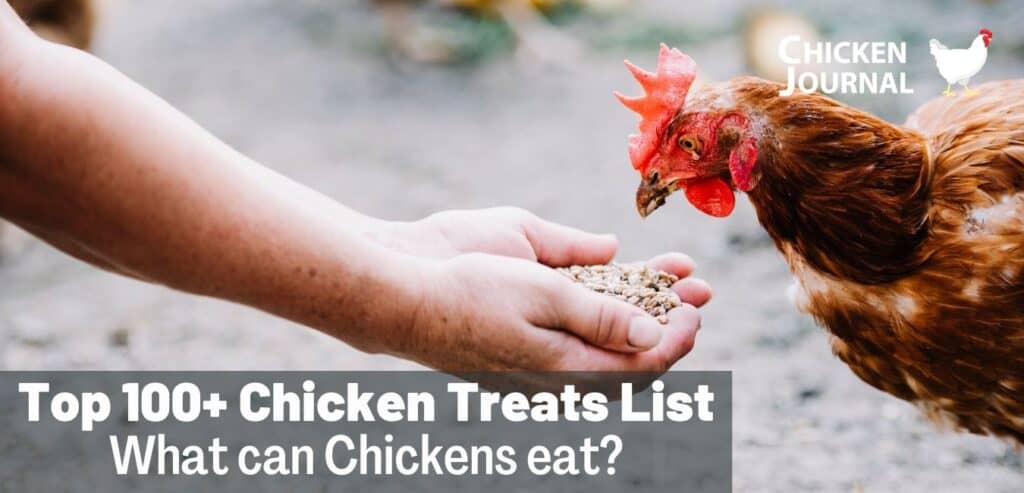Chicken predators are the major problems in poultry farming. These predators mostly affect the daily activities of free-range chickens.
Because chickens are allowed to roam freely in a backyard, predators have a chance to attack and kill them.
If you are a chicken raiser you must know what are the common chicken predators, how they live, and their living signs.
In this guide, we will tell you about the top 21 chicken predators that can kill your chicken, and chicks and eat their feed. The good thing is that we have researched well to make your work easy.
By going through the article, you will learn how to deal with any predator that threatens the existence of your chicken. This helps you take some advanced precautions to save your chicken’s life.
What Are the Chicken Predators?
Chicken predators are those animals that attack chickens, kill them and eat them. Many families find chicken to be the easiest source of protein, so almost every home has chicken.
Besides raising chicken for food or home use, you can also raise chicken for commercial purposes.
Chicken raring is simple and cheap, so high returns are expected. Before raising a chicken, you should have a good coop to protect your chicken from predators and to keep the neighbors from being disturbed.
Predators are a problem for every chicken farmer. You must protect your chicken from predators by putting the correct measures in place.
There are so many chicken predators that threaten every chicken farmer and have different tactics for attacking your chicken. You need to find out which predators are around your area for you to take the necessary precautions.
Top 21 Chicken Predators (How To Prevent Them?)
Below is a list of the top chicken predators that may become a concern for your flocks.
1. Foxes
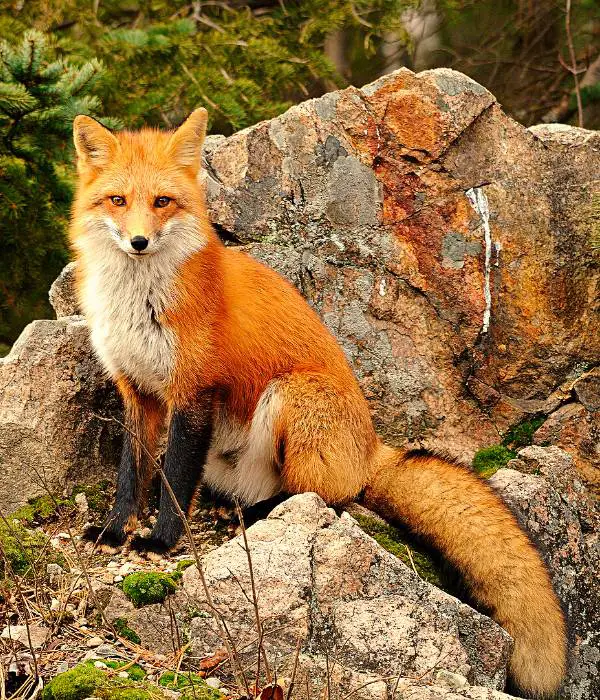
Foxes are reddish brown with a white chest and white-tipped tail. They are the most common chicken predators in North America, Asia, Japan, Australia, and Northern Africa.
Most of the foxes are very daring and intelligent enough to launch an attack. They are found in both rural and urban places. Besides feeding on chicken, they feed on rats, voles, cats, and dogs.
Chickens are vulnerable to their attacks at any time of day or night, as long as there is a chance of success, and they can kill several chickens within a day.
First, a fox identifies where the chicken is, then runs, plucks, and runs away. Foxes are major chicken killers.
Identification Signs
Some of the signs that will help you know whether the fox was around are:
- If teeth or claw marks are left on the door or around the coop.
- Many chickens missing.
- Dug holes around the chicken coop or pen.
Prevention Tips
- Build strong fencing using hardware cloth around your chicken coop and barn.
- Clean the outside bushes and remove hiding places around the coop.
- Keep an eye on your free-ranging chickens.
2. Opossums

Opossums are found in North America, and they are land mammals. Their habitat is forests and bushland, but they can also live in the city or suburbs as long as the place is dry and safe.
They feed on carcasses because they are lazy hunters. However, they attack chicks and eggs since they are easy targets.
Even though they are a threat to chicks and eggs, they help deal with ticks and other insects that spread diseases.
They are not bold, so they are not a big threat, but they need to be dealt away with regardless. They kill by biting the chickens and baby chicks on the neck, thighs, and breasts.
Identification signs
If you realize the following within the pen or coop, there was an opossum around:
- Missing eggs.
- Empty eggshells.
- Baby chicks with no head.
Prevention Tips
- Possums are generally nocturnal so always check your chicken coop at night.
- Repair all large holes on chicken coops.
3. Raccoons
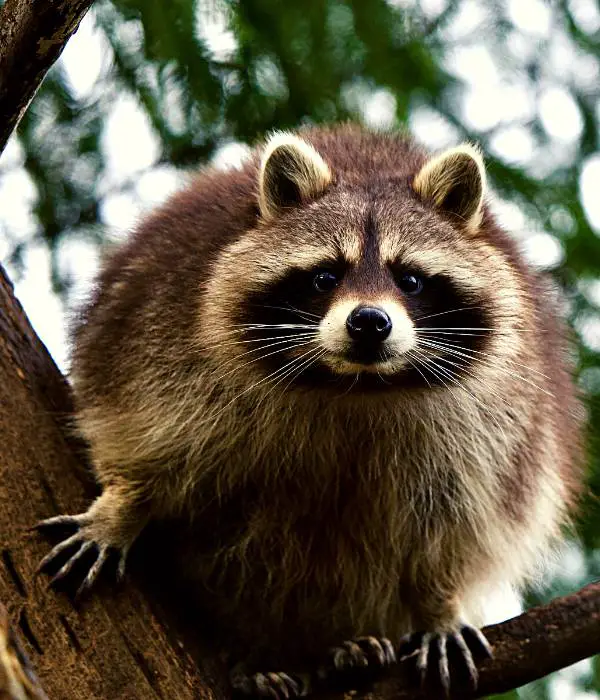
They are mammals from North America that eat vegetables and meat. They feed on grasshoppers, nuts, mice, berries, chickens, squirrels, and bird eggs.
Raccoons are friendly and look harmless, but they can wipe your entire coop. Even though they are wild animals, they also like living around the city.
They kill the chick by biting the head and tearing it or the upper neck.
- Clean your chicken coop regularly.
- Check all holes and opened wire and close them with galvanized hardware cloth.
- Use a few mouse or rat traps inside your chicken coop.
Identification signs
Raccoons leave these trace marks:
- Eaten heat and crop.
- Partially eaten chicken.
- Attacks that can be 5-7 in a night.
- Empty eggshells.
- Faint musky odor.
Prevention Tips
- They are climbers, so you can’t stop them from using a standard fence. Yes, you can use an electric fence.
- Build a good locking system for chicken coop, and nesting boxes.
4. Bobcat
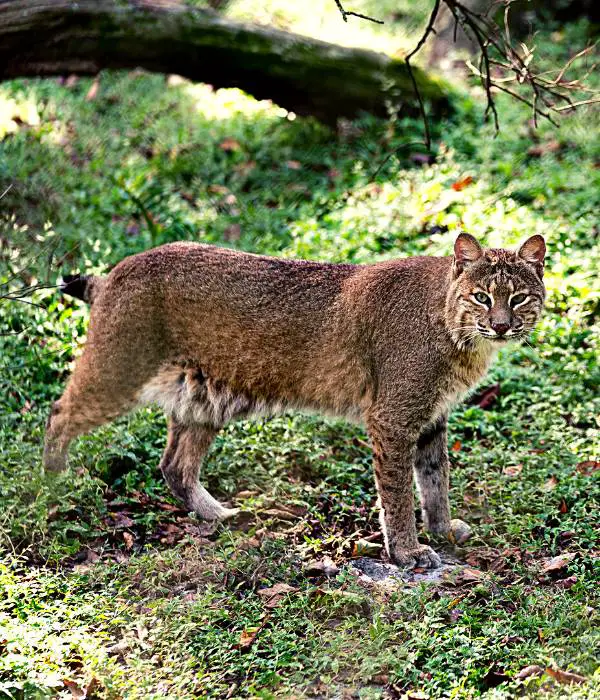
Bobcats reside in Northern America, and they look like normal cats. They are small in size, the size of a medium dog.
They live in the city and the wilderness, but they fear people. Likewise, they use their powerful, sharp claws to attack the chicken on the shoulders, back, and neck.
Identification Signs
- Chicken covered with dirt and twigs.
- My Head bit off.
- Chicken dragged around.
- Claw marks around the back, neck, and sides.
Prevention Tips
- Build strong chicken coop doors.
- Don’t use chicken wire using a strong hardware cloth for fencing.
5. Hawks
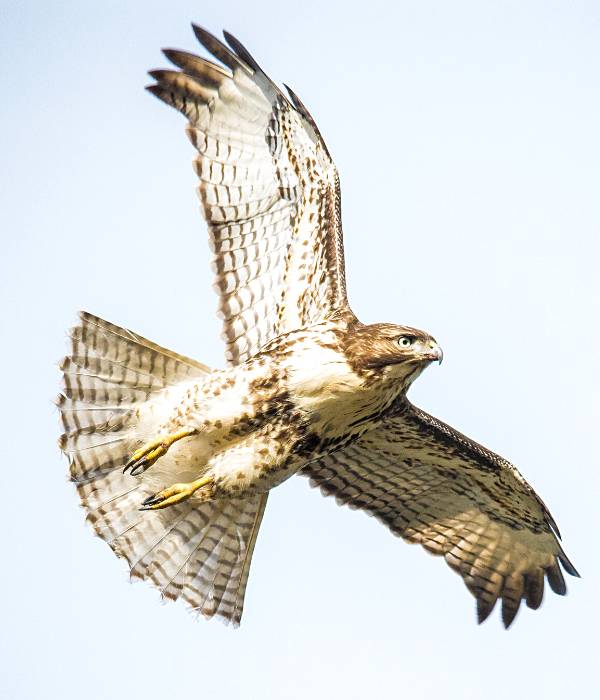
Hawks are birds of prey and are found worldwide except in Antarctica. These are some of the most dangerous chicken predators with sharp eyesight.
Different types of hawks are kites, red-tailed hawks, eagles, and harriers. They are big enough to kill a big chicken.
They are determined to kill since they majorly depend on chickens to survive. Hawks have very sharp and robust talons, which they use to kill their prey through choking or tearing.
Identification Signs
- Scattered feathers
- No traces of chicken
- Sometimes leave a dead chicken whose body parts are eaten.
Prevention Tips
- Preventing chickens from hawk attacks is a little complicated as they attack in an open backyard and barn.
- If you see hawks attacking your chickens better to raise them in closed coops and runs.
- You can tie ropes from one tree to another in hawks-prone areas.
6. Stray Dogs
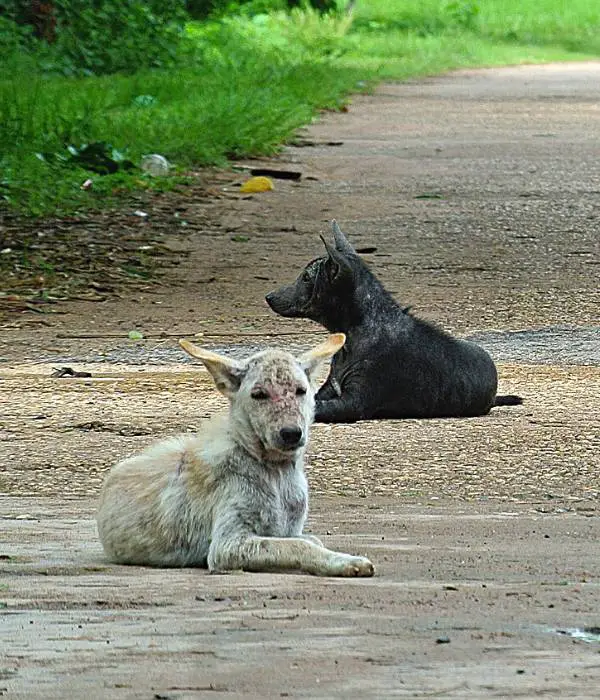
Stray dogs are a big threat to your chicken. The street dogs could be a threat to your chicken or chicks, as they will continue to search for food in the city.
They are big, and therefore killing a chicken is easy for them. You should keep watching if you know a stray dog is around your area.
Stray dogs are all over the world and are one of the most popular chicken killers.
Identification Signs
- You will notice a missing chicken.
- Destroyed fencing.
- Blood in the area.
Prevention Tips
- Stray dogs only attack chickens that go outside your fencing.
- Heightened fencing is the best option to save your chickens from stray dog attacks.
- Otherwise, you should raise your chickens inside coops and cages.
7. Mongoose
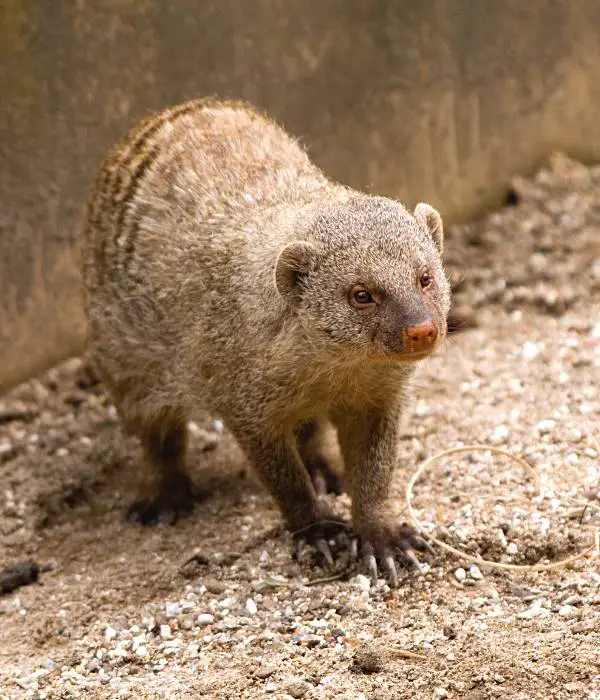
Mongooses are carnivores that eat insects, crabs, chickens, lizards, rodents, and earthworms. Mongooses can kill big animals like leopards, jackals, and animals.
They are dominant in Africa and the southern part of Asia and Europe. Some mongooses are terrestrial, a few semi-aquatic, while others live in homesteads at the top of the trees.
They can sneak into the coop through the tinniest spaces and clear the flock. Their destruction is massive.
The mongoose lures birds by showing them its anus, which is on its back. When a bird tries to peck at its anus, the mongoose attacks it.
However, the chickens are restricted from movement in the coop, which makes it easy for them to kill. If you find mass destruction, you will know a mongoose was in your coop.
Identification Sign
- Missing pullets and cockerels.
- Missing baby chicks.
- Families of mongoose near a chicken coop.
Prevention Tips
- Mongooses are very clever and fast attackers so need strong cages and portable coops if you see any attack.
- Keeping chickens in ½ inch mesh netting coop and the run area is the best idea to save their lives.
8. Snakes

Snakes will eat eggs and chicks. They also feed on rats, mice, and chipmunks, which means they will also protect your chicken.
Snakes like cobras cannot eat large chickens, but they can kill lots of chickens in the shed because of their venom. There are more than 3,000 known species of snakes in the world.
Snakes are widely spread everywhere except New Zealand, Antarctica, Ireland, Greenland, and Iceland.
Besides finding them in the wilderness, you can also find them within your home. They swallow chicks and eggs, so you will find them sleeping in the coop after eating and getting full.
Identification Signs
- Missing egg.
- Missing chicks.
- Dead adult chickens.
Prevention Tips
- Check all cracks and holes in the coop.
- Check your coop inside the everyday evening before closing.
- If you don’t want an open coop door in the daytime, an automatic chicken coop door is the best option.
9. Skunks

Skunks are nocturnal mammals that live in forests, deserts, and mountains. Their preferred prey are chicks, and they also eat eggs.
However, they rarely attack big chickens. They are found in the United States, South America, and Mexico.
Identification Signs
- Faint skunk odor.
- Eaten abdomen and muscle and skin left.
- Dead chicks.
Prevention Tips
- Build the best quality coop doors and fencing around the coop.
- Close the chicken coop door every night.
10. Coyotes
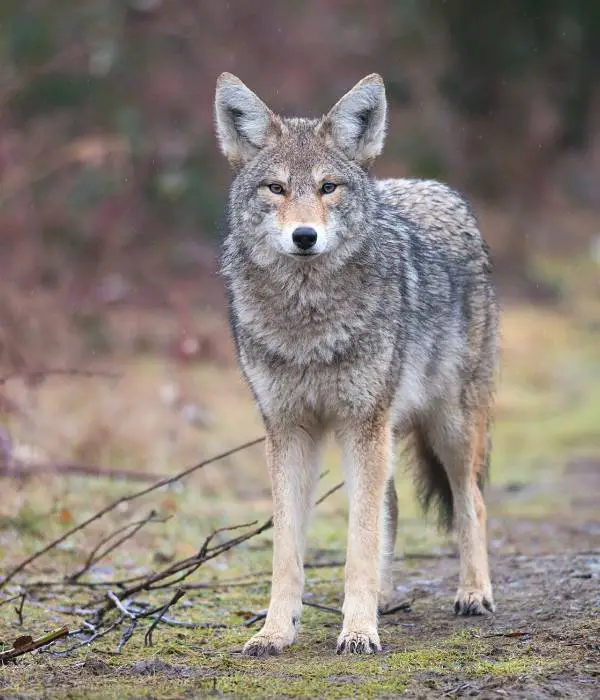
Coyotes are chicken predators that are common in North America. They are from the dog family and are the size of the dog.
They live in deserts, swamps, cities, woodlands, grasslands, and deserts. Coyotes also prey on stray dogs and cats.
They kill by biting the chicken, shaking and releasing it. The coyotes then carry the dead chicken to a safe place to eat it.
Identification signs
- Damaged coop or pen.
- A missing chicken.
Prevention Tips
- Coyotes are afraid of the area where people live. They mainly attack chickens in open areas during free-ranging.
- Cut the bushes and clean the areas around the coop, run, and barn where they can hide.
11. Weasels

Weasels are found all over the world except Australia and the Arctic. They are adapted to different habitats like woodlands, low pastures, urban areas, moors, and marshes.
They are hot-tempered small animals and very destructive. When they enter your coop, they destroy massively and kill more than they can eat. They kill by biting the chicken in the neck from the back.
Identification Signs
- Several bites on the head, neck, and body
- Faint musky smell
- Chicken carcasses neatly piled.
Prevention Tips
- Build strong quality chicken coop doors.
- Use hardware cloth for fencing, not thin chicken wire.
- Cover all holes and gaps using a hardware cloth.
12. Bears
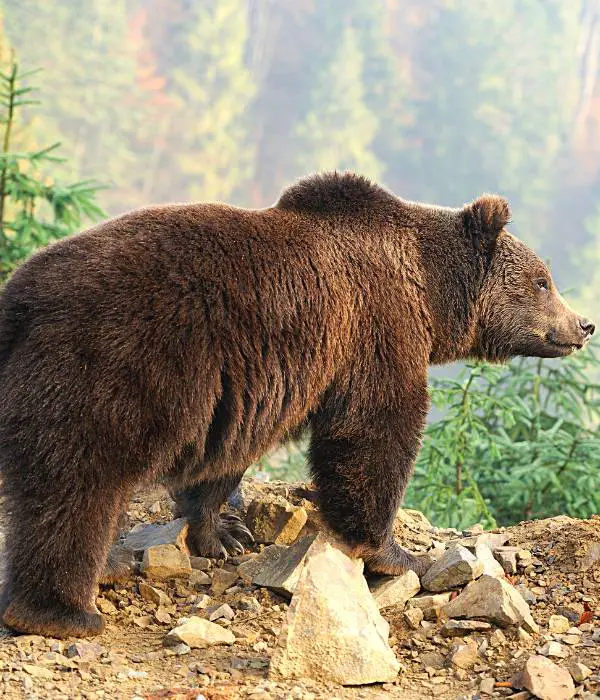
There are two types of bears, the sun bear, which is small, and the polar bear, which is big. Bears reside in Europe, North America, Asia, and South America.
They live in deserts, mountains, forests, grassy areas, and tundra and are attracted by the smell of chicken, garbage, and feed.
Bears will only attack a chicken if it’s desperate for food. They use their strong jaws and sharp claws to kill their prey.
Identification Signs
- A destroyed coop.
- Many dead or injured chickens are scattered around.
Prevention Tips
- If bears attack in your area better to use an electric fence.
- If electric fencing is not sufficient build a strong coop using wood.
- Avoid keeping dirty garbage boxed near your chicken coop, run, and barn.
13. Rats
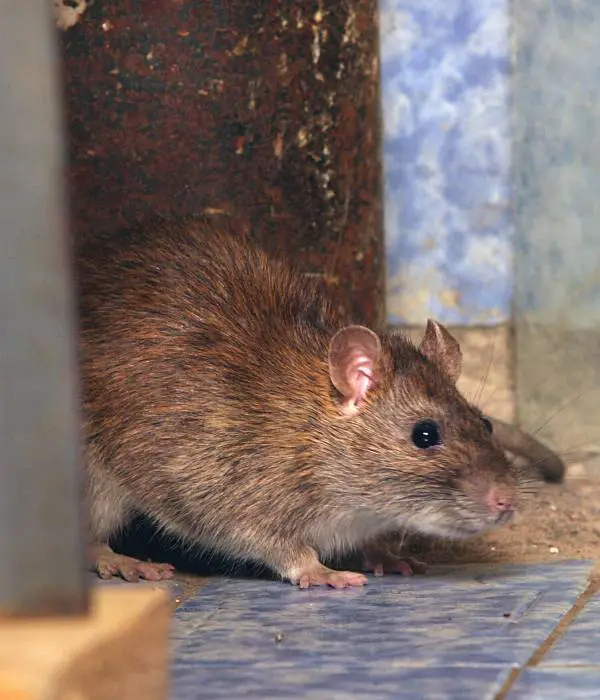
Rats are small, so they rarely kill a grown chicken. They feed on chicks, eggs, and poultry feed.
They are found in all continents except Antarctica and live close to human habitats where they will get food and shelter. Likewise, they kill baby chicks by biting on their neck and head.
Identification Signs
- Bites on the chick’s head and neck.
- Rat feces cluster on the floor.
- Urine smell and poops scattered around.
Prevention Tips
- Use a good quality rat and rodent trap.
- Keep the chicken coop and nearby clean. Poison is not recommended because sometimes chickens eat them and die.
14. Owls
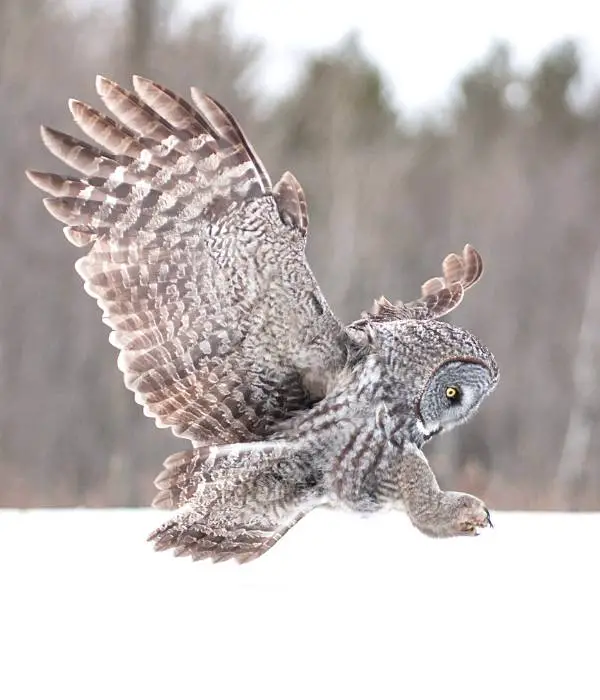
Owls can stay anywhere, provided there are trees. There are over 250 species spread all over the world.
They kill a chicken using their long sharp talons and strong beaks. They are active only at night. Owls very rarely attack chickens but yes, they can kill small pullets and chicks.
Owls usually attack baby chicks and pullets who are left outside the coop at night. Sometimes they also attack small chickens roosting on trees and sitting in open spaces.
Identification Signs
- A chicken or chick missing.
- Feathers scattered.
Prevention Tips
- Check whether all flocks returned to their coop or not.
- Check for any chicks and pullets left outside the chicken coop or run.
- Tie shiny ropes from one tree to another to distract them at night.
15. Cougar

Cougars are also called mountain lions. It’s a big cat found in America and loves staying in the mountains, lowlands, tropical forests, and swamps.
They live in a remote area and will rarely come to their homes. The chicken that is at risk is those free rangers.
Cougars kill and carry their prey with them to a safe place. They have a powerful bite and can kill all the flocks even though they won’t eat all of them.
Identification Signs
- A missing chicken.
- So many dead chickens in the coop.
- Broken chicken fencing.
Prevention Tips
- Cougars are very strong, and they can break any type of standard fencing. So, the best cheap option is keeping chickens in a closed, locked coop.
- Either you can go for electric fencing.
16. Cats
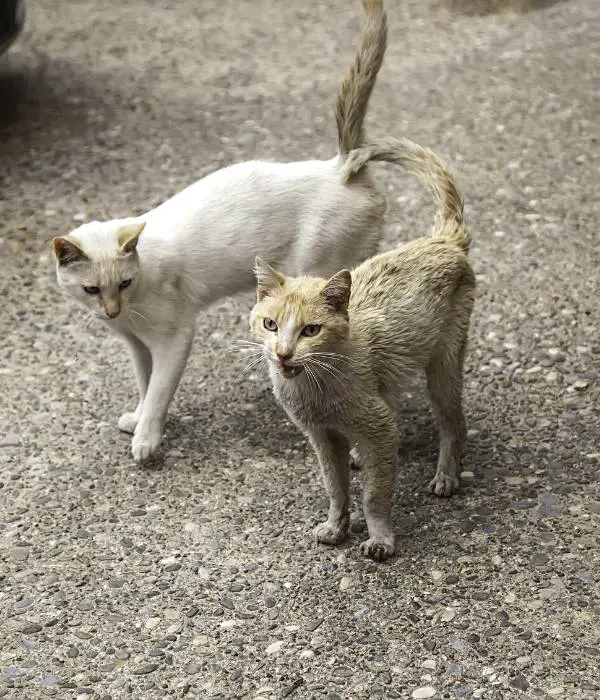
Your beautiful innocent pet may turn against your flock, so they are not as innocent as they look. Cats have very sharp teeth and sharp claws; hence can kill even a grown chicken.
They will kill the chicken and eat the meaty part only. However, it’s rare for a domestic cat to attack chickens.
Identification Signs
- Only the meaty part is eaten.
- Chickens decreasing one by one.
- Scattered chicken feathers.
Prevention Tips
- Cats are climbers, and they can jump over all fencing except electric. So, you can add electric fencing around the chicken coop and barn.
- If a cat is repeatedly attacking, your chickens reduce their foraging time and keep them in portable coops.
17. Minks
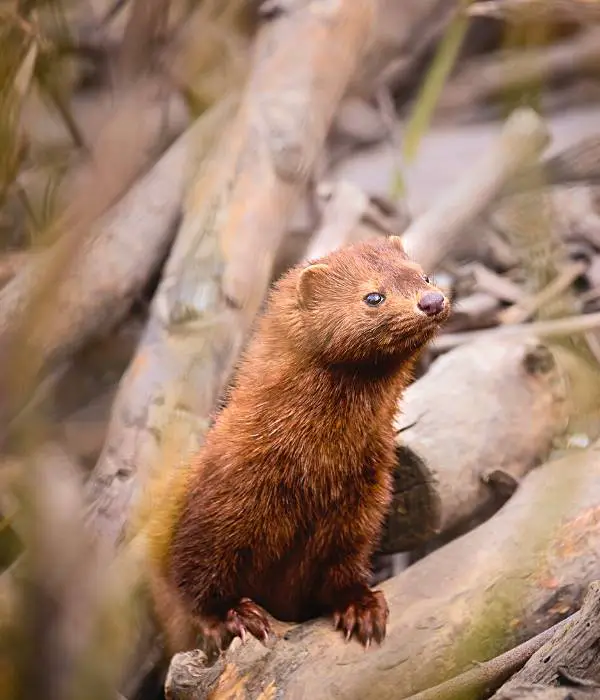
Minks are in the group of weasels and are found in the United States of America and Canada.
They bite the chicken on the neck, and they can kill several chickens at once. They live in forested areas and are close to water areas.
Identification Signs
- Footprints.
- Missing neck/chest region.
- Many brutally killed chickens.
- Bites on the neck and head.
- Musky odor.
Prevention Tips
- Lock your chicken coop doors, windows, and nesting boxes daily and night properly.
- Repair all the broken doors and close the holes using hardware cloth.
18. Badgers
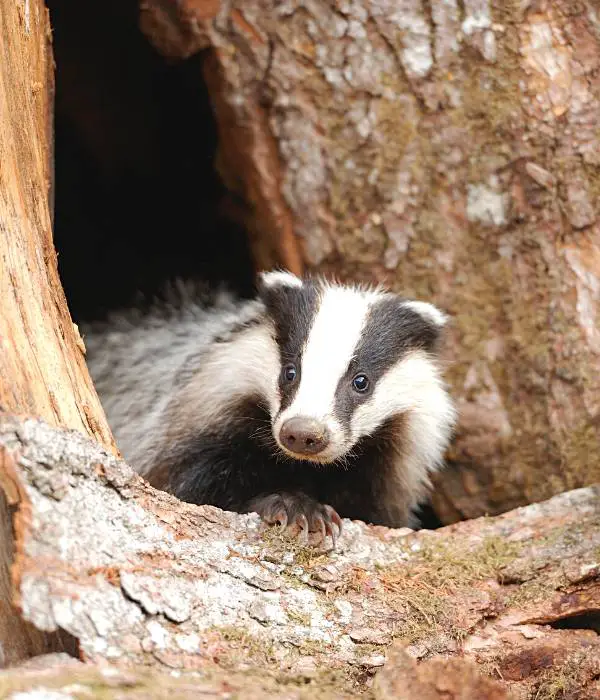
Badgers dig or climb the coop to get an entry. There are different types of badgers, and they are found on different continents.
Some badgers live in most parts of North America, Canada, the United States, and Mexico, while honey badgers live in Africa, the Middle East, and India.
In most cases, they don’t attack grown chickens. Instead, chicks and eggs are their targets. They can kill many chickens and take one with them.
However, they might come back for the rest. They can easily climb and great diggers.
Identification Signs
- A ripped-off coop.
- Missing and killed baby chicks.
Prevention Tips
- They can easily dig and can also climb, so it’s a little hard to stop them.
- Using good electric chicken fencing can stop climbing.
- To stop digging you need to make the concrete floor near coops and inside with strong wood.
19. Wolverines
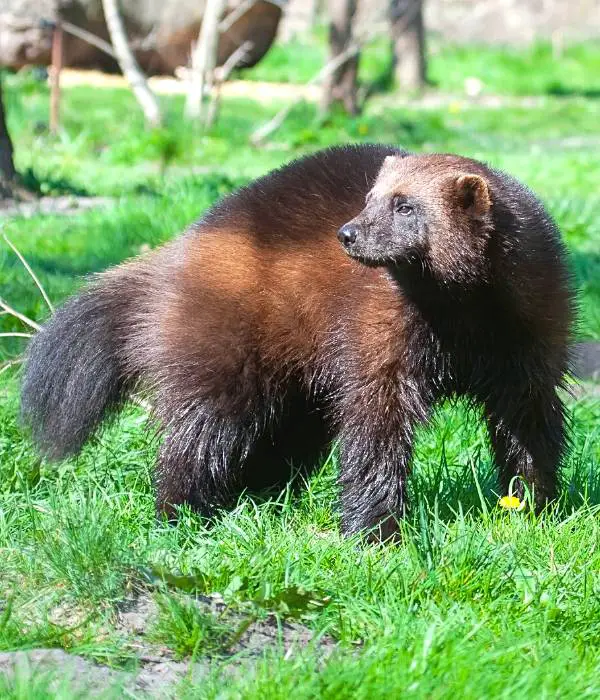
Wolverines are wild animals, and they fear going anywhere near human habitats. They are, therefore, not likely to attack chickens in a coop but rather the ones that are free-range and go to the bushes.
They are found in Alaska, Canada, and some parts of the United States. Likewise, they can easily attack medium size chickens.
Identification Signs
- Missing chicken
- Dead pullets and cockerels.
Prevention Tips
- If you see Wolverines near your chicken coop best to control your chicken’s foraging.
- Restriction your chickens to a particular space is best for saving their lives.
- Use heightened fencing around your chicken coop.
- Clean the area around your chicken coop, run, and barn.
20. Fisher Cats and Pine Martens
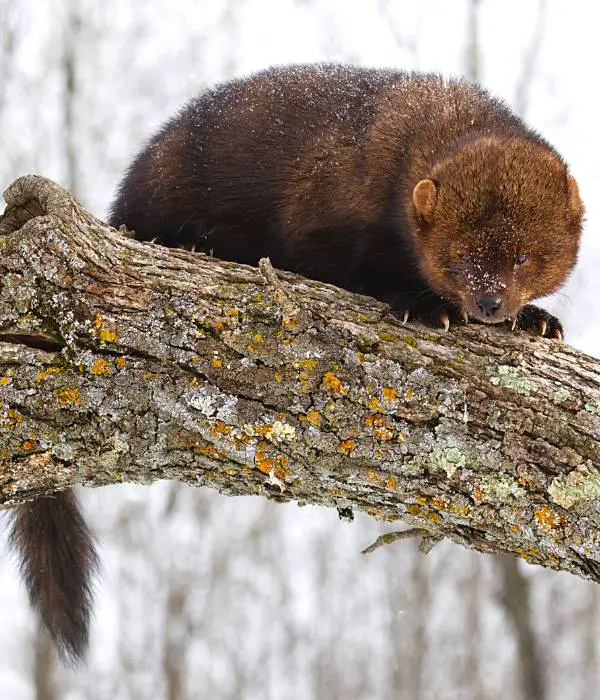
There are members of the weasel family. They are commonly found in Canada and North America and live in temperate and boreal forest areas.
They target the neck region of a chicken and bite it to death. Likewise, Fisher cats and Pine Martens seldom attack chickens in a well-protected coop, so chickens that are not restricted are in danger.
They do not try to get inside where humans live. Mainly they attack if a chicken is foraging alone in busy areas and woodlands.
Identification Signs
- Chickens bite on the head.
- Missing pullets and cockerels
Prevention Tips
- Make sure you have built a strong coop using wood and hardware cloth.
- Extra fencing around the run and barn is best for your flock’s safety.
- Clean your coop surroundings and remove anything useful for their hiding.
21. Crows and Jays

Crows and jays are common in all parts of the world except New Zealand and the southern part of America.
These birds kill baby chicks and eat chicken eggs but don’t harm the mature chickens.
Identification Signs
- Eggshells in the coop or near the coop.
- Missing eggs.
- Died and missing baby chicks.
Prevention Tips
- Make sure you close all the nesting boxes and coop doors properly after collecting eggs and cleaning the coops.
- Keep an eye out during their foraging so that it’s easy for you to recognize any crow or Jay attack.
How to Prevent Chicken Predators Inside a Coop?
Check Your Coop Regularly for Cracks, Gaps, Holes, and Vents
Regular checking of your coop is important to ensure that you will have the cracks, gaps, and holes sealed.
Small predators get their way into the coop through these tiny openings like rats, and snakes. It would help if you didn’t leave any gaps in your pen since that could be the source of all the problems for your chickens.
Go for a Chicken Coop Visit Every Night
Nocturnal predators such as owls attack your chickens at night. You, therefore, need to ensure you visit your coop regularly every night to make sure that you will trace such predators in case they are in the coop.
Some predators are destructive and can clear all the chickens in the coop if not interrupted, so waking up to check on your chickens will save your flocks.
Get a Rooster
Having a rooster or roosters among your flock is crucial. Just like every home needs a man for security, hens, too, need protection around them. Roosters will always protect your flock by fighting the predators.
Even though the predators are strong, roosters will try to fight for their lives and the lives of other flocks, and in the process, they will alert you. Roosters can save you a lot of money and resources, so get one as soon as possible.
Keep Livestock Guardian Dogs
Guardian dogs are critical in your home. They will ensure your livestock is safe, and no predator will dare come near your coop.
No matter what it takes, it’s good to have livestock guardian dogs if you have a large flock of chickens because they are the only ones that will protect your chickens from large predators.
When you have a livestock guardian dog, you won’t need to wake up in the middle of the night to check on your chickens. You can sleep well knowing your chickens are safe.
Build a Chicken Fence Around Your Chicken Coop and Barn
The safety of your chickens should come first. The kind of fence you will put around the chicken coop will determine how safe your chickens are.
Know the right fence you need to put around the chicken coop to avoid losing your chickens. You should know that some predators are very strong and will even jump over the fence, so investing in an electric fence for your chicken can be the only solution.
You should first find out the kind of predators within your area to know the fence you will put around your coop.
Ensure You Lock Your Coop’s Door and Windows Before You Sleep
The door is one of the openings predators can use to kill your chickens. Ensure you close the door when the dark falls to keep the chicken safe inside the coop.
You should also ensure the door is in good condition and not easy for the large predators to break into. Also, check whether the windows are closed before you go to sleep.
Trapping Predators to Eliminate Them
Setting traps can reduce the number of rats for you, or you may use poison. However, you need to be very careful with this method since your chickens might be victims.
If you decide to use poison or traps, you should be sure that your chicken won’t go near that place. You should not let the chicken free when you set the trap or put poison; you shouldn’t place them inside a coop.
Ensure your fence is high enough and buried deeper. Some predators dig to access the coop. If the coop is not buried deeper, they will dig into the coop, killing your flock and eating the eggs.
You must also raise the coop high enough to discourage some predators from jumping into the coop or making climbing hard for them.
Security Cameras and Alarms Will Be Helpful
However, sometimes it’s hard to know which predator was around since most of them have the same identification signs. In such cases, putting up suitable prevention measures is hard.
To know the predators troubling your chicken, you need a security camera for your poultry coop. When you know the predator you are dealing with, you will implement the right prevention measures.
Summary
Keeping chickens comes with a responsibility, one of which is protecting them. Therefore, you need to build a good coop for your chicken since it’s your responsibility to protect them.
The first step to solving the issue of the predators is to identify the predators within your region since every predator has unique techniques for attacking your chicken.
Checking your coop regularly is good to spot any sign of a predator for you to take the necessary precautions. Above we have mentioned the top 21 chicken predators that can kill and eat your chickens, chicks, and eggs.
However, there are still other types of chicken predators that are unknown and which attack very rarely. Which types of chicken predators are present in your area?


